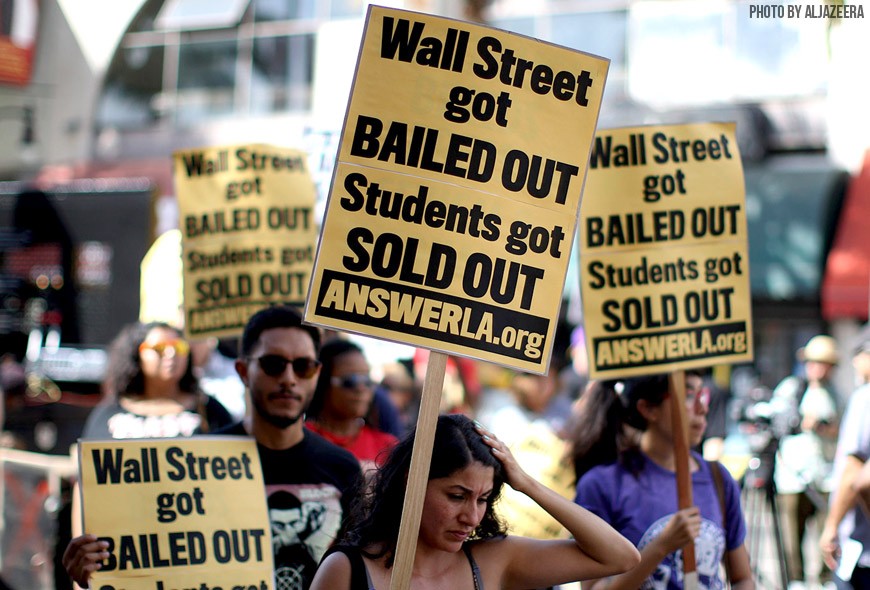In 2009 Steve and Darnelle Mason tragically lost their young daughter in the prime of her life. On top of their grief they were saddled with an astonishing $200,000 in student loans they co-signed for her nursing degree. For generations, American’s were told that education is key to achieving the American dream. Graduate high school, go to college, and pursue a career that you are passionate about. Increasingly this dream is becoming less of a reality. Many adults went to college on the belief that student debt is “good debt”. The financial collapse of 2008 and the anemic recovery have shown that traditional financial thinking of the past does not translate into a guaranteed result for the future.
The Problem with Student Loans
Record student debt is intertwined with the future fiscal health of the Millennial generation. In the past 30 years, there has been a 1,120 percent increase in tuition at universities across America. All of this taking place at a time when wages have been consistently stagnant.
According to the Federal Reserve Bank of New York, outstanding student loans recently surpassed the $1.11 trillion mark. Nearly 11 percent of aggregate student debt is 90+ days delinquent. In another report issued on May 13th, 2014, student debt was cited as one of the reasons why the housing market has failed to fully recover.
For those who come from financially secure families, college is mostly a good bet. However an increasing number of those who come from middle and lower income families are faced with a situation that creates an economically dire future.
Solutions to the Crisis
You must become your best advocate. Those contemplating student loans, and current borrowers must educate themselves on the various pitfalls that await them.
Gather as much information as you can on which schools offer the best value for cost and quality of program. Talk to former alumni, and current students. In today’s world the value of a college degree is not necessairly as important as the experience and technical skills you accumulate working as an intern and networking.
Many colleges offer degree programs with empty promises and dubious practical value. Students can vote with their feet, by refusing to enroll in programs with bad reputations. President Obama’s ambitious plan measuring college performance through a new rating system is just one of the tools that future students will be able to access in order to help them make smart choices.
Many colleges are using tactics similar to deceitful subprime mortgage lenders prior to the housing collapse. Offering false promises of job security, and inflated employment statistics. The recent decline of Law School applicants is the perfect example of how proactive individuals are making choices that change the behavior of degree programs. At times it may feel as though you are helpless, but the first thing you can do is vote with your choices.
For those of us who graduated. Write your congressman and senator with concerns regarding the student loan industry.
Unlike consumer debt, student debt is the only form of debt that is non dischargeable in bankruptcy proceedings.
The sad reality is that an irresponsible borrower can recklessly spend their credit cards on consumer goods. Meanwhile the individual who wants to better their life through education is saddled with student loan debt in the unforeseen event of tough circumstances.
Even worse is the countless number of grieving parents who are stuck with co-signed debt in the unfortunate death of a child. Recently Christopher’s Law was introduced on June 10th, 2014 making it easier to protect co-signers in the event of a borrower’s death. This legislation does not solve every issue, but it is a step in the right direction towards making regulations friendlier for borrowers.
Congress can ease current borrower’s angst by increasing the tax deduction graduates take for interest paid on student loans. Currently the maximum amount you can deduct is up to $2,500 a year. This amount is antiquated considering that many of today’s professional degree programs surpass six figures.
Public and private universities that are facing increased budget constraints at the State level must begin to take a hard look on whether their resources are being properly used to fund quality programs versus lining the pockets of administrators and athletic programs.
On a national level we need an honest discussion on whether expansion of credit for borrowers is contributing towards the exponential cost of tuition. Making college affordable for everyone in society benefits the greater good. However there is very little incentive for colleges to lower tuition, when federal aid subsidizes colleges regardless of price or value.
Telling young Americans that everyone needs to go to college makes great political theater. But not every degree is worth the paper it is printed on.
The rising cost of education is part of the growing erosion that is slowly destroying what is left of the middle class in America. Future students can avoid heartache and financial stress by researching the value of their intended course of study. The rest of us can help this issue move in the right direction by supporting policy that brings reform to student lending.
Affordable education is a key component of our national prosperity. Allowing America to drown under debt will create a less equal, less productive, and ultimately a less secure society.


